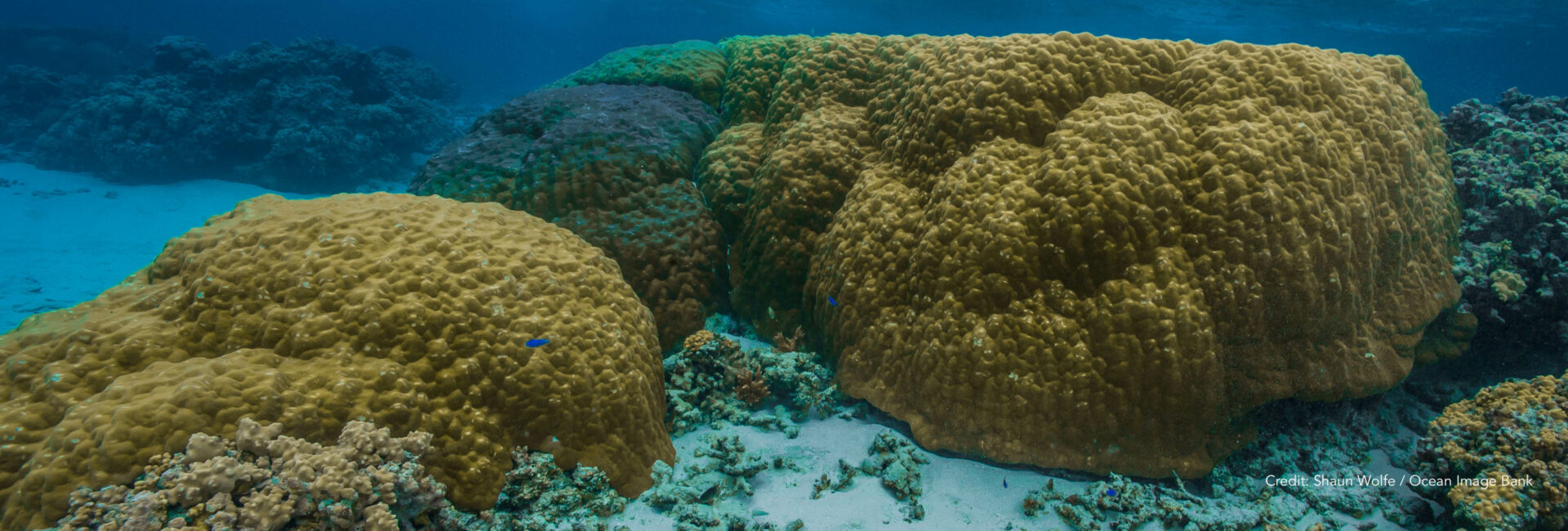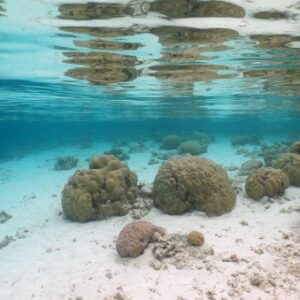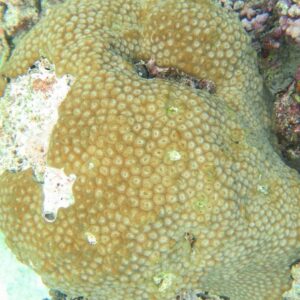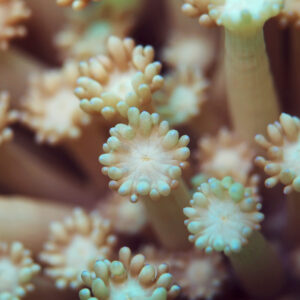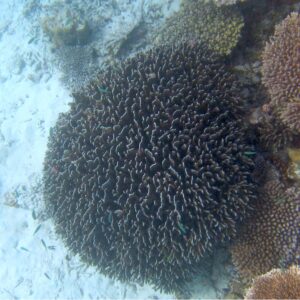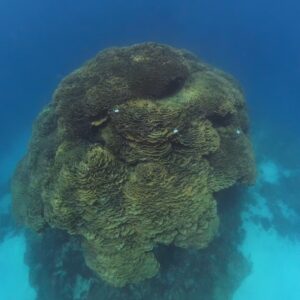How to survey coral colonies
Help us locate a Giant Corals by snorkeling, diving or even using a drone
This section will guide you through the steps to help us locate Giant Corals. Before selecting the survey type that suits you best, please read these BEST PRACTICES to ensure you engage with corals responsibly.
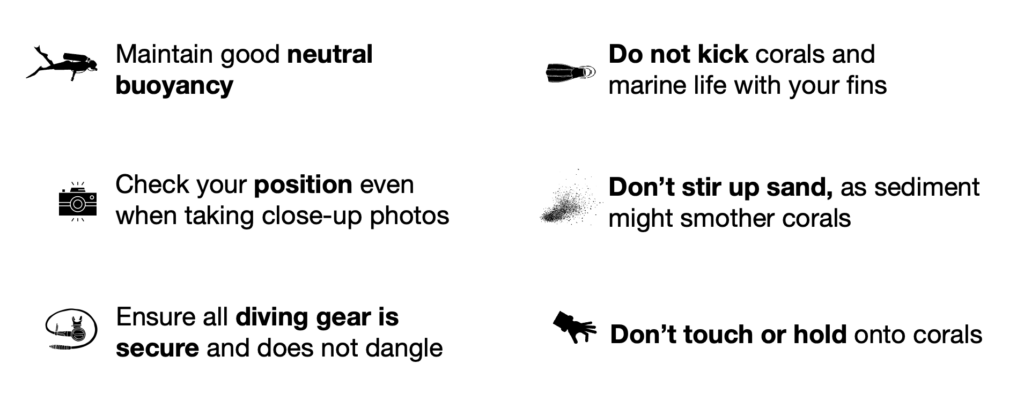
Simple survey. DIVING OR SNORKELLING
This can be undertaken during any excursion and without any dedicated equipment. Both divers and snorkellers alike can help us locate Giant Corals.
Scalable photo submissions will enable us to visually verify the entry and gain additional important information on the colony’s conditions and the habitat where they are found.
Steps to take:
- Grab your diving or snorkeling equipment and any safety tool you may require. If you have a waterproof camera, we highly recommend you to carry it along;
- Head out to the chosen reef;
- During your excursion, look for any giant coral colony. Please remember that a giant colony is considered a coral over 5 meters in size and presenting either a continuous living surface or a continuous skeleton;
- Estimate the size of the diameter based on these size classes: 5-10 meters, 10-20 meters or >20m;
- Growth form. Choose between massive, submassive, encrusting, tabular, foliose, columnar or other (see pictures in the gallery here).
- Location. Indicate the Country and name of the reef (site) and retrieve the GPS coordinates. Seek help from your guide to define the location with the best approximation;
- Depth. Estimate the depth at which the coral was sitting;
- Photo. Take a photo of the colony. Please include an object of known size (as close as possible to the colony without physical contact), such as a person, to allow for size estimation;
- Add any note on the colony.
Download here the printable instructions for simple surveys.
Advanced survey. DIVING OR SNORKELLING
This type of survey is advisable for more experienced participants and can also be used to provide additional information on colonies that have been identified with a simple survey.
Steps to take:
- Grab your diving or snorkeling equipment and any safety tool you may require. If you have a waterproof camera, we highly recommend you to carry it along;
- Head out to the chosen reef;
- During your excursion, look for any giant coral colony. Please remember that a giant colony is considered a coral over 5 meters in size and presenting either a continuous living surface or a continuous skeleton;
- Note the location of the coral with GPS coordinates of the exact point or the estimated point within the reef;
- Note the depth at the base and the top of the colony, either through diving computers or measuring tapes;
- Collect measurements following the chosen methodology:
– Measuring tapes: measure the length, width, and height of the colony perpendicular to it in the largest points and circumference in the widest spot;
– Scalable photos: take one or multiple photos that include an object of known size (as close as possible to the colony without physical contact), such as a diver, a SCUBA tank, or a scaled bar to allow for size extrapolation;
– Photogrammetry: to create an orthophoto of the colony, shoot a photo every 2 seconds or set the camera with a self-timer of 2 seconds to cover the entire surface. Photos should have a 70% of horizontal and vertical overlap. Shoot then photos at different angles to capture all the features of the colony and prevent gaps in the final model. Try to cover at least the widest side of the colony or the whole colony. Please remember to include an object of known size to extrapolate the size of the colony. For a comprehensive guide on photogrammetry in coral reef habitats, visit our supporter Settide’s website. - Identify the genus or species or take wide-angle and close-up photos (possibly with a scale bar within the photo). Please see below some examples of genera:
Porites sp., Diploastrea heliopora, Goniopora sp., Heliopora coerulea, Turbinaria sp., Pavona sp..
- Colony conditions. Estimate the percentage of live coral tissue based on the following size classes: <25% alive tissue; 26–50% alive tissue; 51–75% alive tissue; 76–99% alive tissue; 100% alive tissue (alive);
- Did the colony present any sign of bleaching?
- Did you see any abnormality on the tissue?
- Competing organisms. Did you see any of these organisms on or nearby the colony? Look at a 10m radius for Crown of Thorns (Acanthaster planci) and Cushion Seastar Culcita sp., and look on the colony for the other organisms (Drupella sp., Terpios hoshinota, Dendropoma sp., algae; See here for a detailed description of competitive organisms).
- What was the water temperature?
Download here the printable instructions for advanced surveys.
Drone surveys
This type of survey is advisable for people using drones for leisure or for professional use and will allow people to locate giant corals visible below the surface in the first few meters of water.

Steps to take:
- Choose an area to survey. Avoid the central hours of the day and prepare for the flight in the early morning or late afternoon to avoid sun glint on the sea surface. We also suggest you to prefer low tides as this allows for the drone to capture deeper waters, and finally to avoid choppy water.
- Prepare your drone for flight. Be careful not to fly the drone in the vicinity of people, buildings, trees or antennas and carefully avoid airports or seaplane landing areas.
- Note the model of the drone
- Note the height of the flight
- If you are flying over an area and happen to spot a giant coral colony, take several pictures while maintaining a closer height and ensuring a 70% overlap both vertically and horizontally. When capturing these shots, try to avoid including the horizon as much as possible and take photos from different angles, parallel to the sea surface and with tilted camera.
- Send us your footage and the metadata
Download here the printable instructions for drone surveys.
